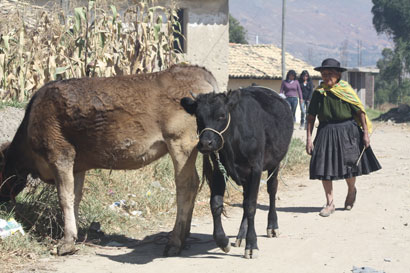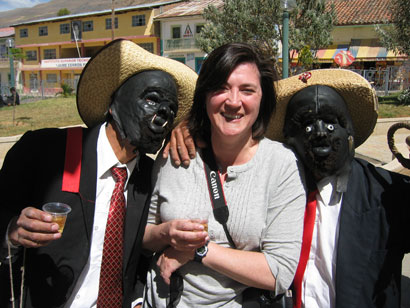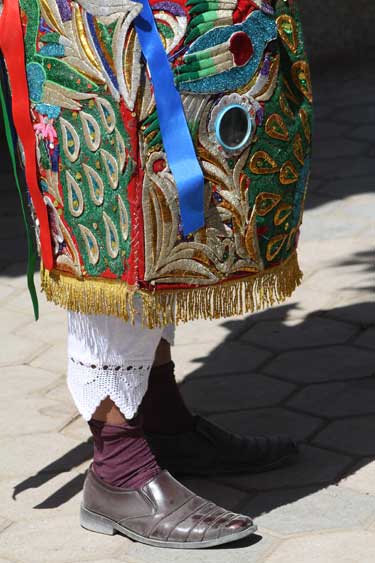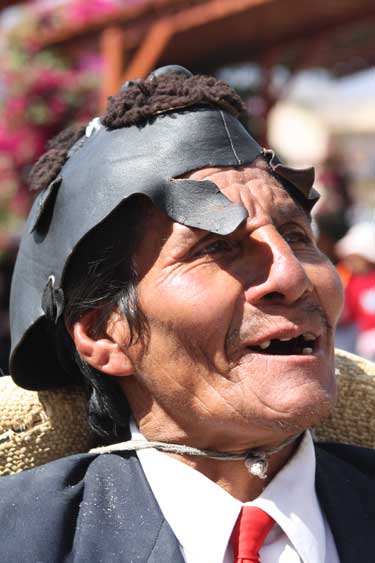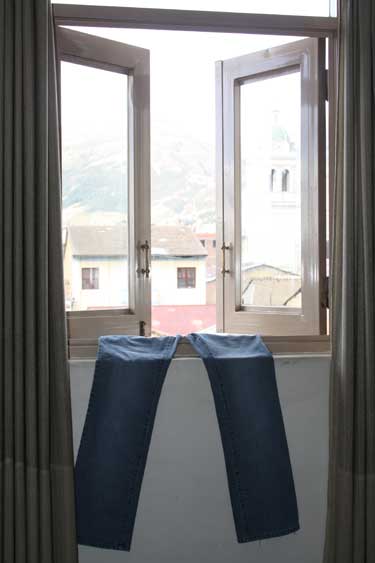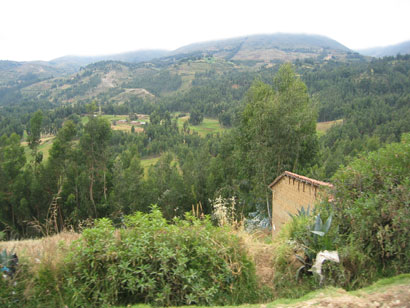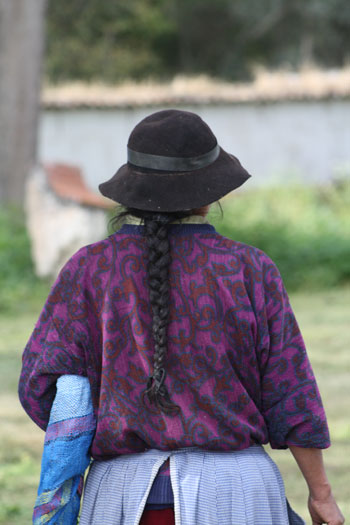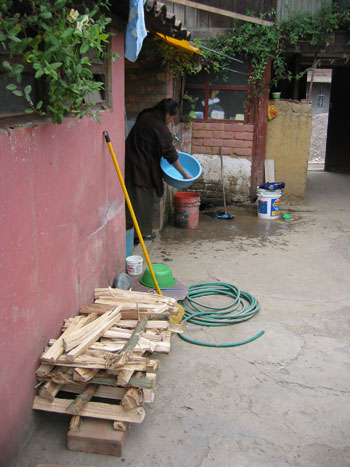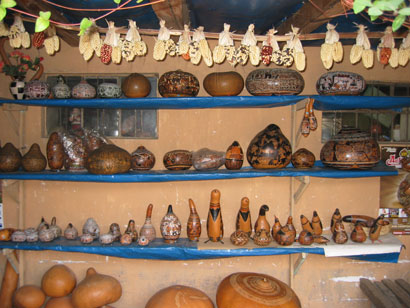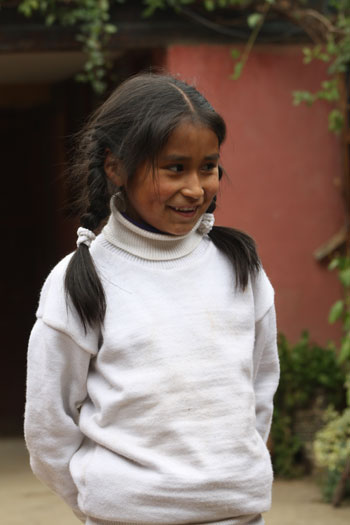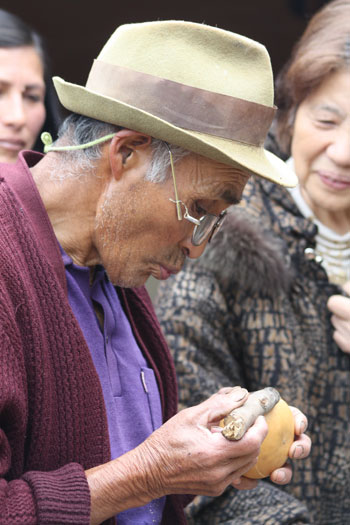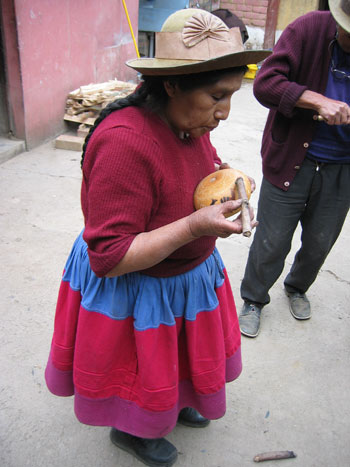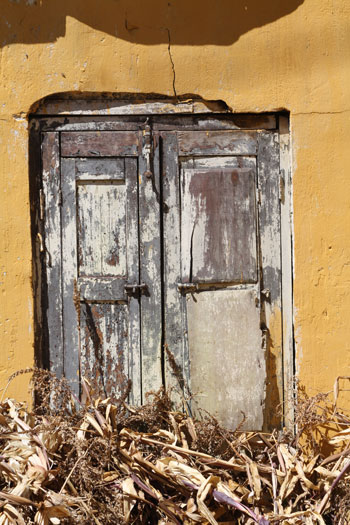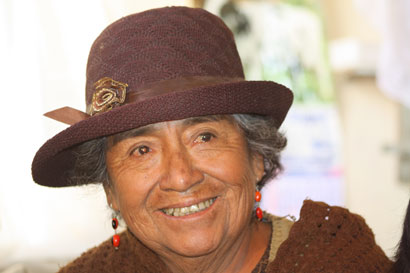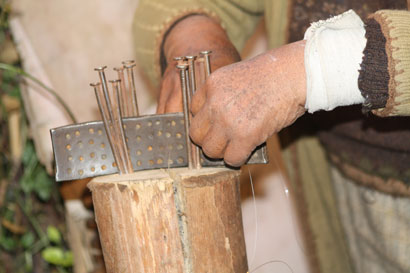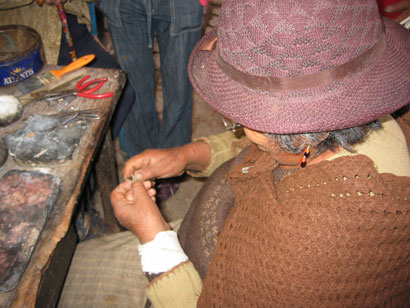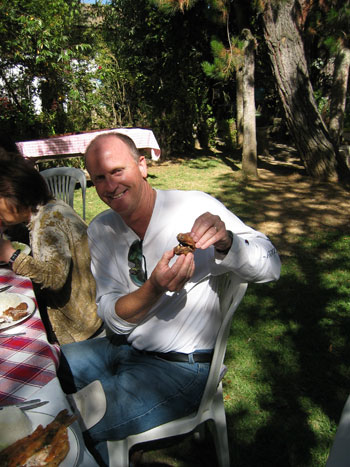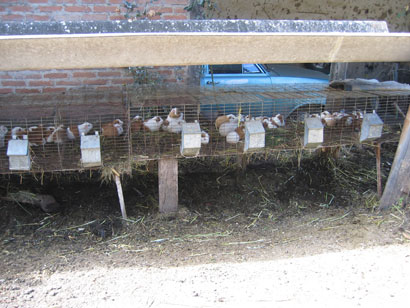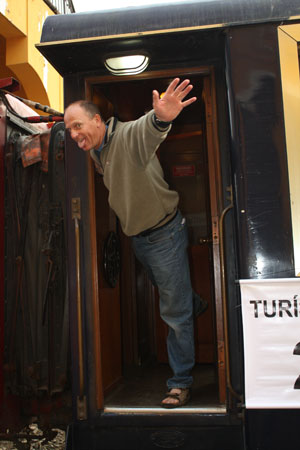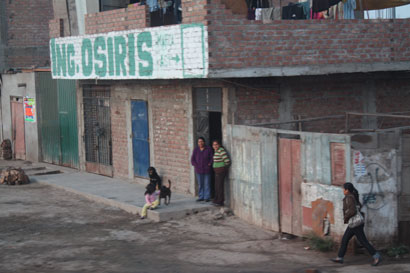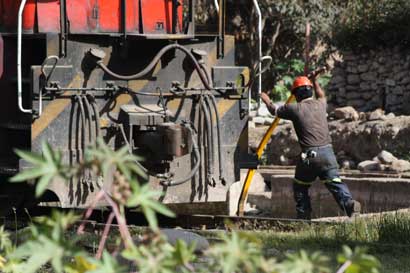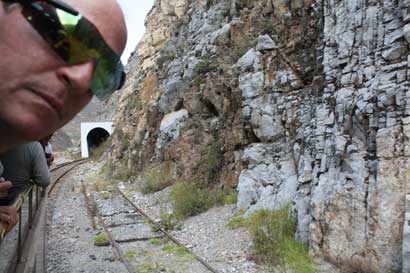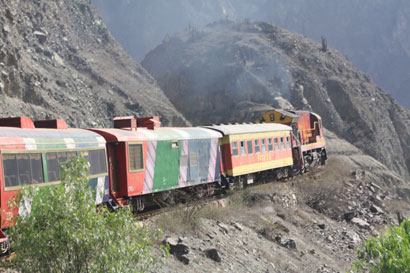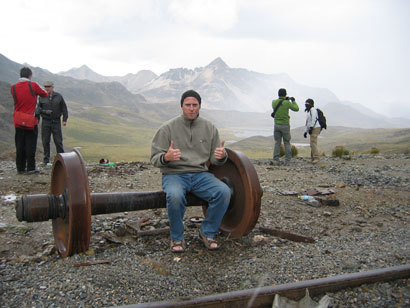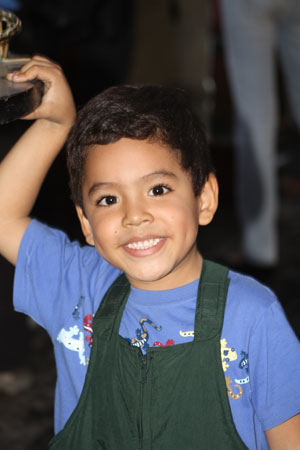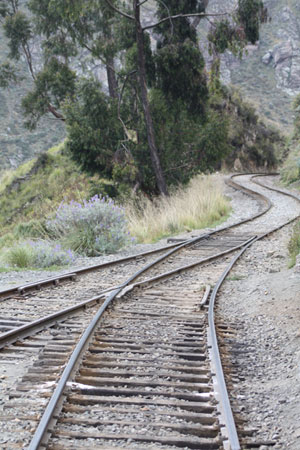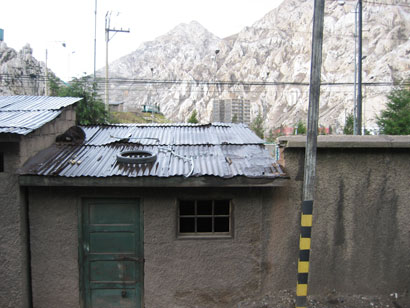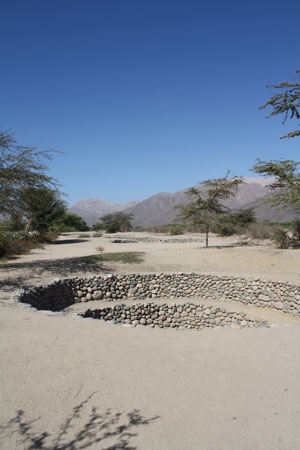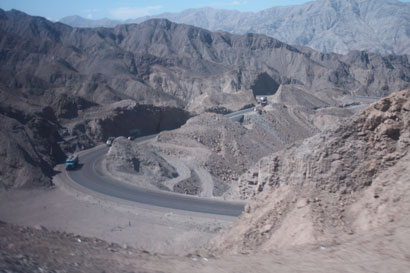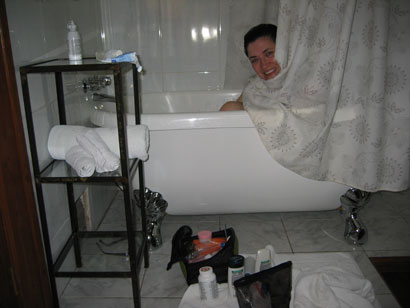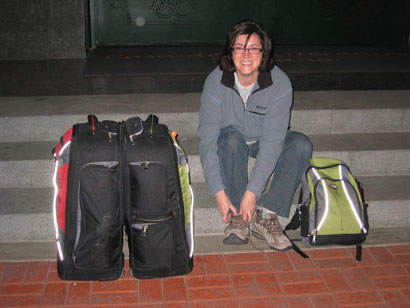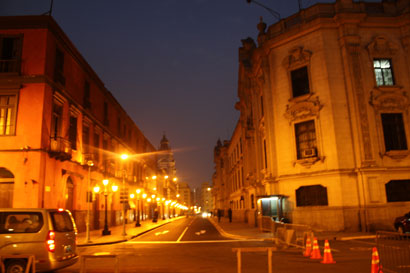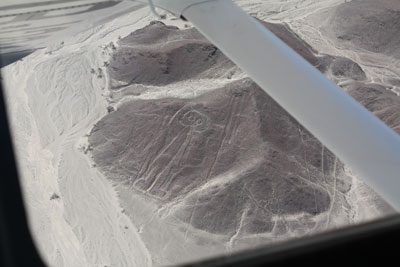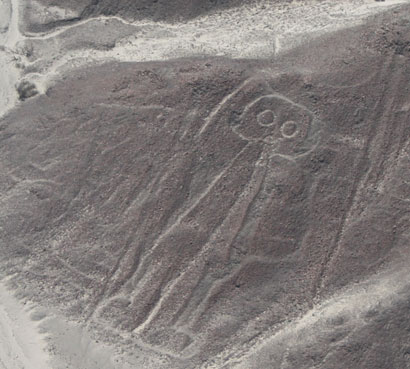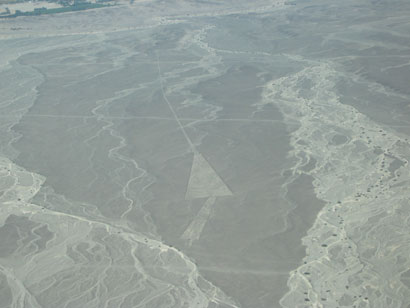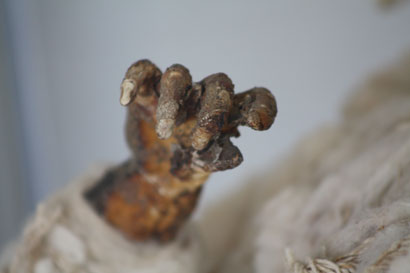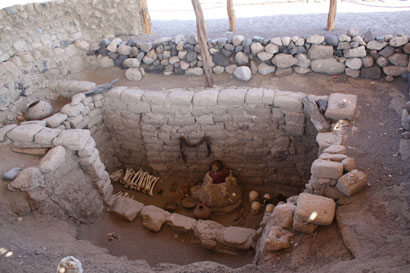Well, not exactly the midnight train, although we were on it at midnight.
If you haven’t been following my Peru posts or have forgotten where we were, you can review the last one. Or click on Peru 2010 in the Categories list in my sidebar. That’ll take you to the Archives for every post about Peru. Just keep clicking Older Posts until you get to the first one.
I last left you—and my laundry (possibly)—hanging somewhere in Huancayo in the highlands of Peru. This was the night both my dh and myself fell sick, so we weren’t too happy with the night shift clerk at our hotel. We felt like he was giving us the run-around about our laundry. It was probably just a language barrier. However, Sunday morning (Day 9), we woke feeling under the weather, so had a very light breakfast, to say the least. By this point, I could barely stand to look at Peruvian food. My throat was very sore and I had a bad head cold. Steve’s fever had broken throughout the night, but he had, shall we say, stomach issues. Yes, I’m making Peru sound like a blast! It is. But I’ve reached the conclusion that it doesn’t matter how well you try to prepare yourself healthfully (does that make sense?). When you’re traveling to a foreign county for the first time, something’s bound to get ya. My something (the bad sore throat) didn’t heal for several weeks. In fact, several weeks after returning home, when I realized I was on my third bad sore throat since Huancayo, I finally went to the doctor and got a prescription. I am now healthy as a Peruvian pony, thank you very much.
So, Sunday morning I had a conversation with the day desk clerk (female) that proved way more illuminating than anything we’d been told the night before about our blasted laundry. No, she couldn’t speak English, and I confess that I guessed a large part of what she said. But! She gave us the impression, through body language and tone of voice, that she WANTED to help us, unlike the fellow from the previous night. I deciphered, with the help of Steve’s Spanish questioning, that she considered the mix-up the hotel’s responsibility, not ours (as the customers!). Then our guide, Susannah, showed up, and helped with the translation. This was when we had it confirmed that our laundry hadn’t been done in this hotel, but had been shipped out to one and possibly two different locations. The desk clerk was able to find half our laundry at this point. But our jeans were still missing. We were promised they’d be back at 5 in the afternoon (our return train to Lima left at 6 p.m.).
Sunday wound up being a wonderful surprise. Our Japanese friends accompanied us through the Sunday markets, which were a joy because, like I’ve said before, the people in Huancayo were happy to have us there but did not constantly try to sell us stuff. They spoiled us, as we were to learn when we finally made it to Cusco (base point for traveling to Machu Picchu).
After visiting the markets, our Japanese friends declined visiting the ruins around Huancayo. Later, once Steve and I had visited Pisaq and Ollantaytambo and Machu Picchu, we could see why our friends didn’t feel the need to do the historical circuit in Huancayo. But I’m glad we visited the ruins around the city. They weren’t anything like or anywhere near as preserved as the ruins we saw in the Sacred Valley, etc., but, again, every local we met was extremely welcoming. Unfortunately, I don’t have any photos of the ruins around Huancayo that really do them justice, and we were both VERY under the weather. We did see this sort of thing a lot:
I love the juxtaposition of the older woman in traditional dress (what she would wear everyday) and then the younger woman in the background, wearing jeans and sweaters. The more rural the area, the more likely you’ll find young women in traditional dress as well as members of the older generation.
I love this guy:
The older generation of Peruvians do love their hats. We were the only white people around during our time in this village, and I’m not sure what he thought of us. He’s sitting near a church entrance. I think a service was in session, because I don’t remember going in, and if you look real close you can see a figure in the church doorway that looks an awful lot like a priest. Or maybe it’s a ghost!! Maybe it’s the old fella’s doppelganger. Maybe it’s mine! The Harbinger of Sore Throats.
Steve and I didn’t know how long we could last throughout this day. We knew the 6 p.m. – 7 a.m. train trip would be rough, and we still had to pack. We didn’t want to insult our guide, who was amazing, by cutting the day too short, however, so we accompanied her to another village with another church (we visited at least 3 churches this day), and that’s when…we got a pleasant surprise.
We stumbled upon a celebration in the square outside the church. Our guide had no idea it was occurring. Celebrations are common in Peru. We came across at least 3 or 4 public gatherings between Huancayo, Cusco and Puno. Either religious celebrations, a funeral, political gatherings, or a community celebration such as today’s.
We came across these dancers who had just finished entertaining the Peruvian crowds:
One of the fellows in front with the dark masks took to us (um, me). An old lady was passing around a strong, cider-type drink to them, and he insisted we each have one.
The guy on the left was VERY friendly (not my left, the picture left). I downed my cider-type drink and then the guy on the left insisted that the group, the members of which were all very hot and tired, should repeat their dance just for us!
Only men dance this dance. The two fellows above have dark masks to symbolize the African slaves brought to work in Peru. Slowly, the slaves were accepted into the culture, and that’s basically what the dance was about.
GOL (Guy On Left) encouraged the other men to don their garb again. The headgear was made of real peacock feathers:
They all wore hard shoes to dance in. Reminded me of my grandfather’s square-dancing shoes:
And here they are dancing:
The fellows in dark masks basically cracked whips and walked around the dancers until they were “accepted” into the culture. The dance went on. It went on and on and on. We thought it would be over in five or maybe ten minutes, and maybe it was, but it felt like it just went on and on. I felt sorry for the young men dancing and dancing and dancing the same moves over and over. I asked Susannah, “When does it end?” “When the band stops playing.” (Yes, there was a brass band). Well, they must have played a good fifteen minutes. And then my friend didn’t want us to leave. Susannah had to tear us away.
Did he finally unmask? Yep! Here he is, trying to convince me in Spanish to come back in about 14 months to watch them perform in a National competition. He was a hoot!
But Susannah finally, um, got us out of there, we visited the church and then visited with some locals in a tiny shop where we went to buy water, then visited another church. It was time for lunch, and we knew we were in for another trout lunch. Steve really didn’t feel good, and I was overheating myself by this point, so we asked Susannah to take us back to the hotel. We were still on the hunt for the remainder of our laundry, and we needed to rest before finding our way to the train station.
When we arrived at the hotel, lo and behold, we had our jeans back! I was NOT looking forward to traveling the next two weeks with only the jeans on my legs. We dealt with the same female clerk from the morning. Using Susannah as an interpreter, we were assured that WE DID NOT OWE THE HOTEL ANY MONEY FOR THE LAUNDRY. Because it was “their fault,” as she put it.
So we took our wet jeans upstairs, and I hung mine in the window to dry:
I love this picture!
So…we rested and packed. We called the desk to arrange a taxi to the train station (which is only 5 minutes away, but Huancayo itself is a busy city, so we wanted a taxi). We went downstairs at the appropriate time, and the taxi was there. I asked the amount owed and paid the desk clerk…who was once more the uncommunicative fellow from the night before! I swear, all was hunky-dory until we were actually on our way out of the hotel with the taxi driver. Then the desk clerk stopped us and demanded we pay for our laundry service. After we had been assured by the female clerk that we didn’t owe anything.
We had no idea if there had been a communication mix-up or if he wanted to keep the soles (Peruvian money) for himself. The laundry guy himself came by, and we went through the whole rigmarole again. At this point, Steve pulled out his wallet prepared to pay for a portion of the laundry bill if not the whole thing. Of course, THEN, the laundry guy didn’t WANT any money, LOL.
Well, if that was our most frustrating experience in Peru, I’ll take it.
Remember the little boy, Fabian, from the train up to Huancayo? He was there again Sunday night! His seats weren’t beside ours this time, but he was so happy to see my husband. His parents had bought him a Spanish-English phrase book, which we thought was very cute.
Everybody hunkered down, and we wended our way back down to Lima, arriving at about 7 a.m. Completely and totally exhausted.
Would I do it again? Well, no. I’ve already done it. Would I wish I’d experienced the train trip to Huancayo, if I hadn’t gone on it? You bet! It was, without a doubt, one of the highlights of our trip.
I’ll say it again, the people of Huancayo, aside from the desk clerk dude, were welcoming, friendly, and amazing. Seeing the highlands instead of just visiting “Peruvian Disneyland” was incredible. Totally and completely, irrecoverably RECOMMENDED.
P.S. No, my jeans didn’t return from the laundry service embroidered. My socks and tops did, though. Throughout the remainder of our trip, I kept discovering the initials of the hotel name embroidered in my clothes.
